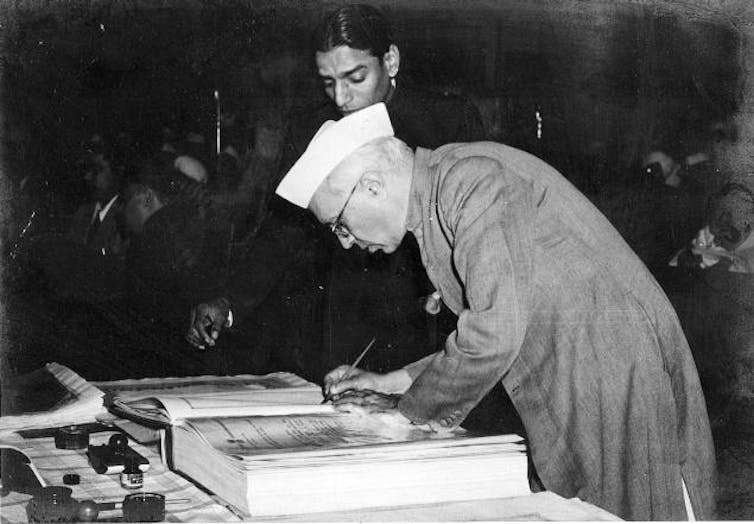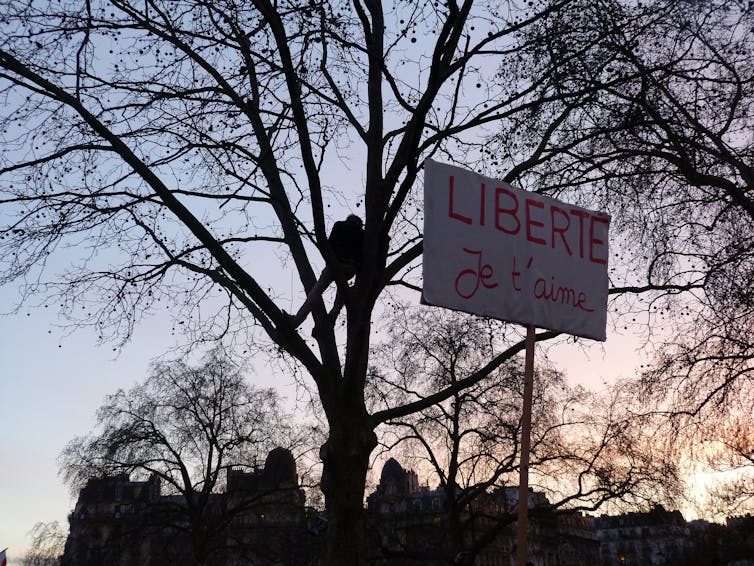Religion is one of the toughest challenges facing modern secular societies in their search for identity, equality and cohesion.
It’s increasingly a stronger source of identity than nationality or ethnicity for minorities and migrants while majorities appear to grow more and more religiously indifferent.
The paradigms of republicanism, as practised in France, or multiculturalism as implemented in a number of Western democracies, such as the UK and the US, or indeed employment-based integration models of Sweden or Germany, are all in crisis.
This can be seen in the banning of Islamic clothing, kosher or halal meals and “burkinis” in France; the backlash against migrants following the UK’s decision to leave the EU; and the rejection of Angela Merkel’s pro-migration policy by a portion of the German population.
Europe has not yet found a middle way between secularism and state religion that combines national and religious identity, and where ethnic and religious minority groups can co-exist within a state’s institutions. But other countries’ experiences can perhaps shine a light.
Accommodating difference
First, some key questions: in accommodating religious diversity should we encourage more religion in public life, for both majorities and minorities, or move towards a more radical secularism? If the former is the way to go, what are the obstacles that a more egalitarian religious pluralism would face in liberal Western societies?
All sorts of problems could arise from minority groups making special requests for accommodation, including powerful majority churches finding it difficult to accept pluralism, feeling that their historically privileged position is threatened.
What about those who oppose the presence of religion in public life, let alone an increase of it? Will all minority religious groups be equally easy or difficult to accommodate? Recent rises in Islamophobia in Europe would suggest such moves would face significant opposition.
While most governments turn inwards to look at what went wrong in their own version of secular republicanism or multiculturalism, perhaps the answer is to be found in more radical views, beyond secularism, such as those in the large multi-religious and multi-ethnic democracies of Asia.
Looking for alternatives
India is a relevant case in point. The country faced a tough challenge at its creation in 1947. Divided at first along religious lines, the communal riots that followed its partition into India and East and West Pakistan signalled the trust deficit that existed between its majority Hindu and the Muslim communities.
Bringing people together under these circumstances required something more than the promise of state neutrality. The nation’s diverse communities, the victims of communal violence and the Muslims who stayed on in India needed to be assured that they would be equal partners in the emerging democracy and that they would be treated in a fair and just manner.

A commitment to secularism – namely, that the state would not be aligned with any one religion – was an important first step. But it was not enough. In a society where religion was, and remains, an important anchor of personal identity, deeply valued by individuals and closely tied to notions of self-worth and dignity, the state had to make space for plurality of religious observances and cultural practices.
For members of different communities to have a sense of equality, the state needed to create a public culture that was hospitable to religious differences – one that allowed individuals to enter and participate in public life despite their religious beliefs.
Indifference towards matters of religion by the state, or complete neutrality and promise of non-intervention, were simply not the right answer.
Beyond secularism
To create a comfortable and non-alienating public culture, the Indian constitution gave each individual the right to observe their religious practices, and gave minorities the right to set up their own religious and educational institutions.
Minority educational institutions could receive funds from the state, if they so desired. Although no firm obligation was placed on the state, this allowed subsequent governments to support minority schools.
The government put together a list of public holidays that gave due consideration to different religious communities. At least one holiday was given for a major festival or event of religious importance, for each community. And it made an effort to design national symbols (such as the flag, and the national anthem) in a way that included different communities.
The colours of the flag and the symbols on it were carefully chosen. Orange was chosen because saffron was associated with the Hindu community, green was included for its significance for the Muslim community. White was added to represent all other communities.
When it came to the national anthem, Jana Gana Mana was preferred to Vande Mataram. Although the latter had been used at different moments in the struggle for independence, it invoked spiritual symbolism from the Hindu religion, and this was to be avoided.
As India was embarking on its journey as a democracy, it had the opportunity to deliberately opt for inclusive symbols. But of course, this option is not available to most countries of Europe today. So what is there to be learned from the Indian state?
The lesson is the importance of creating a diverse public sphere that is inclusive and welcoming to all. And, most of all, one where cultural choices – in dress codes, food habits, and modes of address in social interaction – are not shaped entirely by the culture of the majority. This is the opposite to what we see in modern-day France, for instance.
No easy solutions
India’s founding framework went far beyond the idea of liberal secularism; it made a deliberate effort to give minorities the space to continue with their distinct religious and cultural practices and to pass them on. Culture and religion-related anxieties can be exploited to nurture resentment, and this had to be avoided.

Visible differences that marked the bodies of citizens in different ways were not seen as threatening. One could get past them, or at least see them as markers of identity instead of prejudging them as liberal or anti-liberal.
This was an important starting point but it had to be supplemented by government policies that ensured equal opportunity and security for all. Governments at the political centre and in different states failed to perform these tasks. Repeated incidents of inter-community violence, such as the 2013 Muzaffarnagar and 2002 Gujarat riots, and the failure to punish the perpetrators of such violence have pushed vulnerable minorities into the arms of their community for solace and legitimised the hold of religious leadership.
These could have been avoided. The state could have given a stern message that such forms of violence and community targeting would not be tolerated. But in case after case, governments let their citizens down. Political parties were divided, choosing to stand with different communities at different times but always with an eye on electoral gains.
In an effort to curb such communitarian politics, the Supreme Court has recently prohibited appeals to religion and caste during elections. This is being seen as a landmark judgment by some, but even though it aims to force parties to think of all citizens, and not merely one community, it does not address all concerns.
It has not, for example, forbidden reference to Hindutva – the founding principle of Hindu nationalism. The courts claim it denotes a way of life rather than a religious doctrine used as part of a campaign for cultural homogenisation.
Space for dissent
The point is that, in a democracy, it is not religion per se but efforts to stigmatise and intimidate people or groups that is a matter of concern. This is what India has yet to tackle effectively. When political parties can reach out to religious communities, take up their concerns and show that they give representation to candidates from different religions, they give a voice to minorities. This stems the sense of alienation and neglect that radicalisation so often taps into.
The most serious challenge today is to make space for individual dissent and autonomy and protect a person from those who wish to enforce the diktats of the community or the nation. India has focused so heavily on equality between groups that it has neglected to protect individual liberty – something that is pursued more effectively in Europe.

India has much to learn on this subject from Western Europe. But its own journey shows that the presence of religion or its markers are not, and should not be, seen as the most important threat. It is not a case of more religion or less of it.
Anxieties about religion and the lack of respect for it can be tapped to create a rigid and more closed identity along with a politics of resentment. The focus must therefore be on creating a stake in democratic politics, involving different communities at different levels of institution functioning and extending avenues for equal opportunity.
The pluralised public sphere
It should go without saying that no state’s approach to religion is perfect, and India faces its own significant problems with diversity and integration, from religious violence to the persistence of the caste system. But that doesn’t mean there is nothing for Europe to learn.
Put simply, integrating religious differences is easier when religious freedom goes hand-in-hand with an understanding of the nature of religious commitments, and the creation of a pluralised public sphere.
Neutrality is insufficient when communities already see religion as an important part of their personal identity, one they want to hold on to along with their civic identity. It should be possible to have both.
Current political debates in the West need to open up to solutions that go beyond secularism, from places like India and from elsewhere. They need to embrace differences with policies for integrating minorities into education, the labour market and overall public life.







